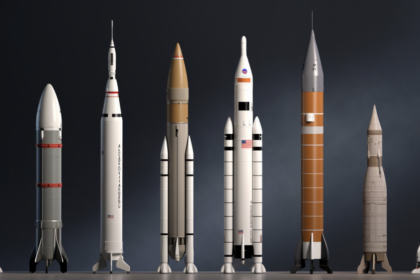Addressing climate change is more urgent than ever. Accurate and real-time climate monitoring is essential as global warming causes rising sea levels and harsh weather. This is where satellites excellent capabilities come in. Their aerial view captures a variety of climatic data. This article discusses how satellites are improving real-time climate monitoring. From climate monitoring’s history to its problems and opportunities, satellite technology has been crucial to comprehending Earth’s changing climate.
The Evolution Of Climate Monitoring
Monitoring climate change’s impacts is essential to understanding and reducing its repercussions. In the past, climate monitoring depended on ground-based observations, which gave crucial data but limited coverage and real-time insights. Satellite technology has transformed climate monitoring.
Technology and satellites have improved climate monitoring, providing a more complete and real-time picture of our changing environment. Climate monitoring formerly depended on ground-based measurements, which were valid but limited. Data collecting on the ground may be costly, time-consuming, and restricted. Satellites provide worldwide data from a bird’s-eye perspective.
Real-time data from satellites is needed to follow fast climate change. Real-time monitoring is vital as climate change impacts become more apparent and decision-making needs fast data.
A complete understanding of climate change relies on the worldwide network of climate-monitoring satellites. These satellites have radiometers and spectrometers to measure temperature, greenhouse gases, sea level, and ice cover. This equipment relays data to Earth in real-time, allowing scientists to track climate change with unparalleled precision.
Key Satellites In Climate Monitoring
The leading climate monitoring satellites have different capabilities and areas of interest. NASA’s Earth Observing System satellites, ESA’s Sentinel series, and NASA-NOAA Suomi NPP satellite are major climate-monitoring satellites. These satellites have several pieces of equipment that collect climatic data.
For example, the AQUA satellite’s Advanced Microwave Scanning Radiometer (AMSR) detects sea surface temperatures and gives ocean circulation data. The AQUA Atmospheric Infrared Sounder (AIRS) monitors greenhouse gas concentrations. ESA’s Sentinel satellites monitor the environment. Earth’s seas are observed by Sentinel-3, which measures sea level, surface temperature, and colour.
Sentinel-5P also monitors greenhouse gases and contaminants. The NASA-NOAA Suomi NPP satellite has VIIRS and OMPS experiments. These tools are essential for detecting ozone and aerosol levels. These and other climate-monitoring satellites must work together to provide reliable climate change data. By monitoring many components of Earth’s climate system, satellites help us comprehend ongoing changes.
Satellite Data And Climate Modeling
Data is crucial to climate modelling’s accurate simulations and projections. Satellite data is essential to climate modelling, offering a variety of information. Satellite data is helpful for climate modelling for several reasons. First, it gives scientists data from practically everywhere on Earth. Understanding the intricate global climate system interconnections requires this comprehensive coverage.
Satellite data is gathered in real-time or near-real-time. Tracking rapidly changing climatic indicators like temperature, sea ice extent, and greenhouse gas concentrations requires this timeliness. Current data is essential for making educated judgments and projections as climate change impacts the planet.
Satellite data is precise and accurate. Climatic-monitoring satellites have advanced equipment that measures climatic factors accurately. These include sea surface temperatures, sea level rise, air temperatures, and greenhouse gas concentrations.
Climate models use high-quality data to simulate and forecast future climates. Satellite data on sea surface temperatures and ocean currents are essential for simulating ocean dynamics and climate regulation. Similarly, greenhouse gas concentrations inform temperature prediction algorithms.
Climate models benefit from satellite data’s precision and timeliness. Real-time data is essential for improving and updating these models to give accurate forecasts for policymakers and academics as our knowledge of climate change evolves.
Examples Of Climate Studies Using Satellite Information
Satellite data significantly affects climate research. It has allowed academics to study several climate change topics. Some necessary satellite climate studies include:
1. Sea Level Rise:
Sea level rise is monitored by radar altimeter-equipped satellites like the Jason series. These satellites accurately monitor sea surface height, giving worldwide sea level data. This information is crucial for understanding how climate change affects coastal and low-lying communities.
2. Ice Melt And Glacial Retreat:
Landsat satellites with optical and thermal sensors have tracked the rapid melting of polar ice caps and glacier retreat globally. Scientists can measure ice mass loss and sea level rise using these data.
3. Temperature Trends:
The Advanced Technology Microwave Sounder (ATMS) on Suomi NPP has supplied vital atmospheric temperature data. These observations let scientists follow climate variations by monitoring Earth’s lower and higher atmospheric temperatures.
4. Deforestation And Carbon Emissions:
NASA’s Terra and Aqua satellites’ optical and infrared sensors, such as MODIS, have helped monitor deforestation and land use changes. These measurements are essential for assessing land-use change carbon emissions and global carbon cycle impacts.
5. Extreme Weather Events:
Hurricanes, cyclones, and typhoons are tracked in real-time by GOES (Geostationary Operational Environmental Satellite) satellites with different sensors. Climate change forecasts and catastrophe management need this knowledge.
Satellite data is essential to many climate studies, allowing researchers to track and comprehend climate change. Satellite data is crucial for tackling climate issues due to its real-time and global nature.
Challenges And Limitations
Satellite technology has transformed climate monitoring, but it has drawbacks. Understanding these restrictions is crucial for ethical satellite data usage in climate studies and policymaking.
1. Spatial And Temporal Resolution:
Satellites have spatial and temporal resolution issues. Satellites may not catch small-scale weather systems or other climatic phenomena. Satellite revisit periods may also cause data gaps.
2. Instrument Calibration And Accuracy:
An accurate satellite instrument requires careful calibration. Instrument deterioration may affect data quality, requiring continual maintenance and calibration. Satellite data consistency and dependability are ongoing challenges.
3. Cloud Cover And Atmospheric Interference:
Cloud cover and atmospheric interference may hinder satellite data gathering. Clouds may obscure Earth’s surface observations, and atmospheric conditions can alter greenhouse gas measurements.
4. Data Integration And Validation:
Data from several satellites might require more effort to integrate and validate. Validation and correction are needed to obtain a complete and accurate dataset from several sources.
5. Cost And Accessibility:
The creation, deployment, and operation of climate-monitoring satellites are expensive. These costs in satellite orbit and data access may limit researchers and organizations with limited budgets.
Understanding these obstacles and constraints is crucial to optimizing satellite climate monitoring advantages. To solve these problems, research, technology, and international collaboration must continue.
The Future Of Satellite-based Climate Monitoring
Satellite-based climate monitoring promises technological advances and a better knowledge of our changing environment.
- Advanced Sensor Technology: Sensor technology will improve climate-monitoring satellites. Climate data will be more accurate with improved sensors.
- Higher Spatial and Temporal Resolution: Future satellites may gather more excellent climate-related features. We will better comprehend climatic dynamics.
- Data Accessibility: Satellite data accessibility is being expanded. These efforts attempt to improve climate data access for academics, policymakers, and the public.
- Integration with Ground-Based Observations: Validating and improving climate monitoring requires satellite-ground observation integration. Collaboration between satellite and ground-based systems will increase.
- Sustainability and Space Debris Mitigation: Ensuring the long-term viability of satellite operations and reducing space debris are ongoing priorities. Best practices and international agreements will govern these efforts.
As satellite-based climate monitoring evolves, climate change and its consequences will be better understood. These satellites’ data will continue to inform climate studies and policy, helping mankind combat climate change.
Conclusion
Satellite technology has transformed real-time climate change monitoring, offering a plethora of data on many climatic factors. Climate science has entered a new age due to the progress of climate monitoring, the critical satellites, and the importance of satellite data in climate modelling.
Temperature, sea level rise, glacier melt, greenhouse gas concentrations, and severe weather events may be monitored in real-time. Satellite-based climate monitoring faces geographical and temporal limits, instrument accuracy, and cost issues.










